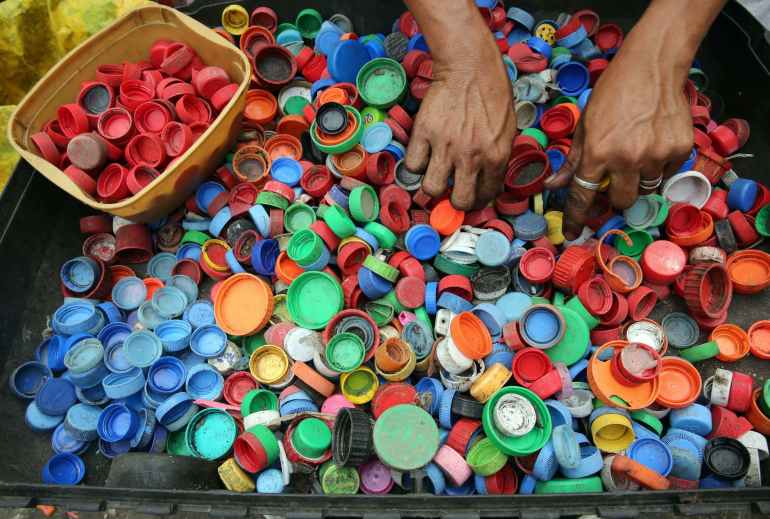A recent study - issued by the "Swiss Federal Institute of Technology" (EPFL) in Lausanne on September 23, presented an unprecedented approach to plastic recycling, and researchers inspired this approach from nature in a simulation of "recycling" the components of organic polymers found in our environment.
The study was published in the journal "Advanced Materials".
string of pearls
Proteins are one of the major organic compounds that serve as basic building blocks for everything biological.
It is made up of long chains of molecules known as amino acids.
The proteins within organic polymers are constantly broken down into fragments and then reassembled into different proteins, without losing the quality of their building blocks.
Thus the researchers believe that the way these molecules can be broken down and reshaped in nature points to a potential strategy for recycling synthetic polymers.
Researchers have come up with a revolutionary approach to recycling plastic based on harnessing proteins (Foreign Press)
The official website of the Swiss Federal Institute published a press release in which materials scientist Simon Giavieri explained the targeted recycling process in a simplified way, saying, “The protein is like a string of pearls, and each pearl in it represents an amino acid, and so each pearl has a different color, so that the color sequence in turn determines the structure of the chain and thus its properties ".
"In nature, protein chains are broken down into their constituent amino acids, then cells combine these amino acids together to form new proteins. Thus, new strands of pearls with a different color sequence are made," he added.
The researchers called the innovative approach "nature-inspired circular-economy recycling" (NaCRe).
Under this approach, researchers were able to split protein samples in the laboratory into amino acids, and then assemble them into new proteins with different structures and uses.
They were also able to convert proteins from silk into a "green fluorescent protein," a product used in biomedical research.
The team noted that the quality of the proteins is not affected by this process of disassembly and rebuilding, as they remain unchanged.
Synthetic polymers can be broken down into smaller blocks and reassembled (pixels).
Synthetic polymers challenges
The researchers believe that they can simulate what happens in natural proteins on plastic so that synthetic polymers can be broken down into smaller blocks and reassembled again, and then produce materials that can be used for as long as possible, but they are sure that developing the technology needed to achieve this goal must be achieved. It takes a relatively long time.
And materials scientist Francesco Stellaci - from the Swiss Institute - believes that achieving something like this "will require a fundamentally different mindset." "Color - which is a rarity - the color sequence will be of little importance then. Plus we don't have an efficient way to synthesize synthetic polymers from pearls of different colors in a sequence-controlled way."
The researchers expect the innovative technology to have a role in reducing waste that must be stored or buried after the process of recycling biodegradable plastics is completed.
An average person throws away about two thousand kilograms of plastic over a 70-year lifespan (pixels).
The team estimates that an average person throws away nearly 2,000 kilograms of plastic over a 70-year lifespan, and given the roughly 8 billion people on the planet today, the cumulative total of per capita output represents a catastrophic waste landscape.
According to the report, published on the Science Alret website, Francesco Stellaci believes that "recycling techniques must be seriously considered to create new materials that meet the requirements of sustainability, which is what nature is already doing every day."

